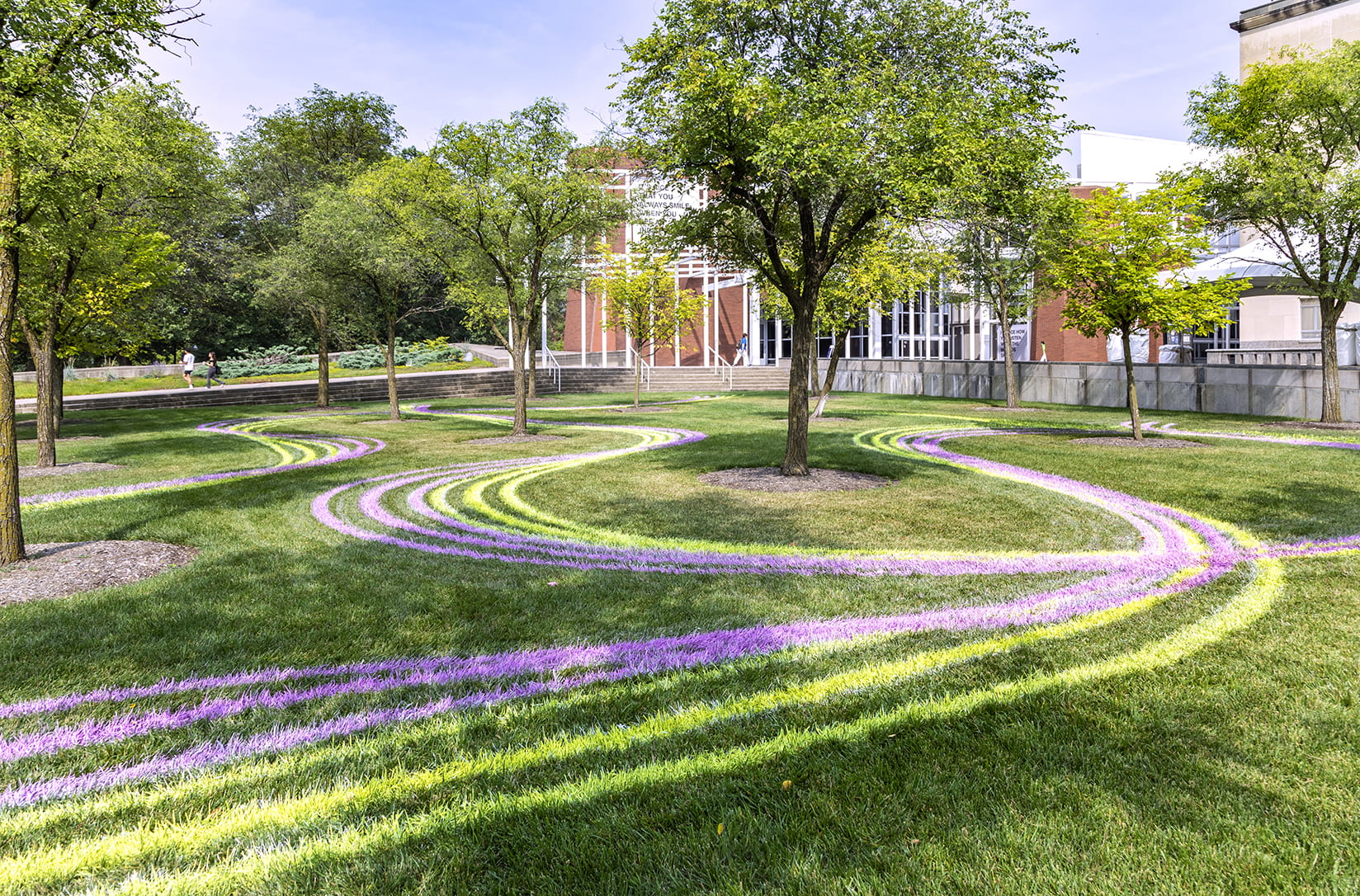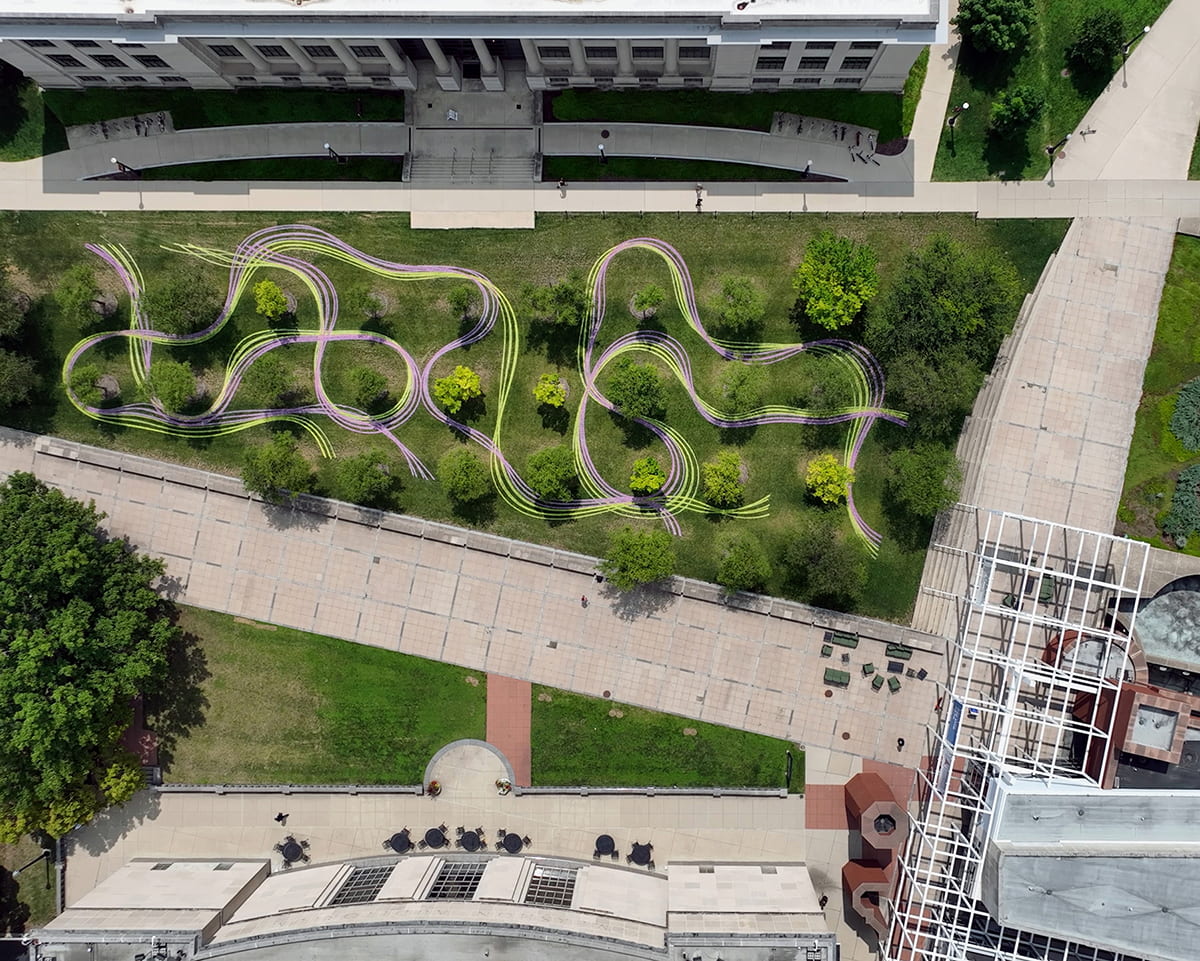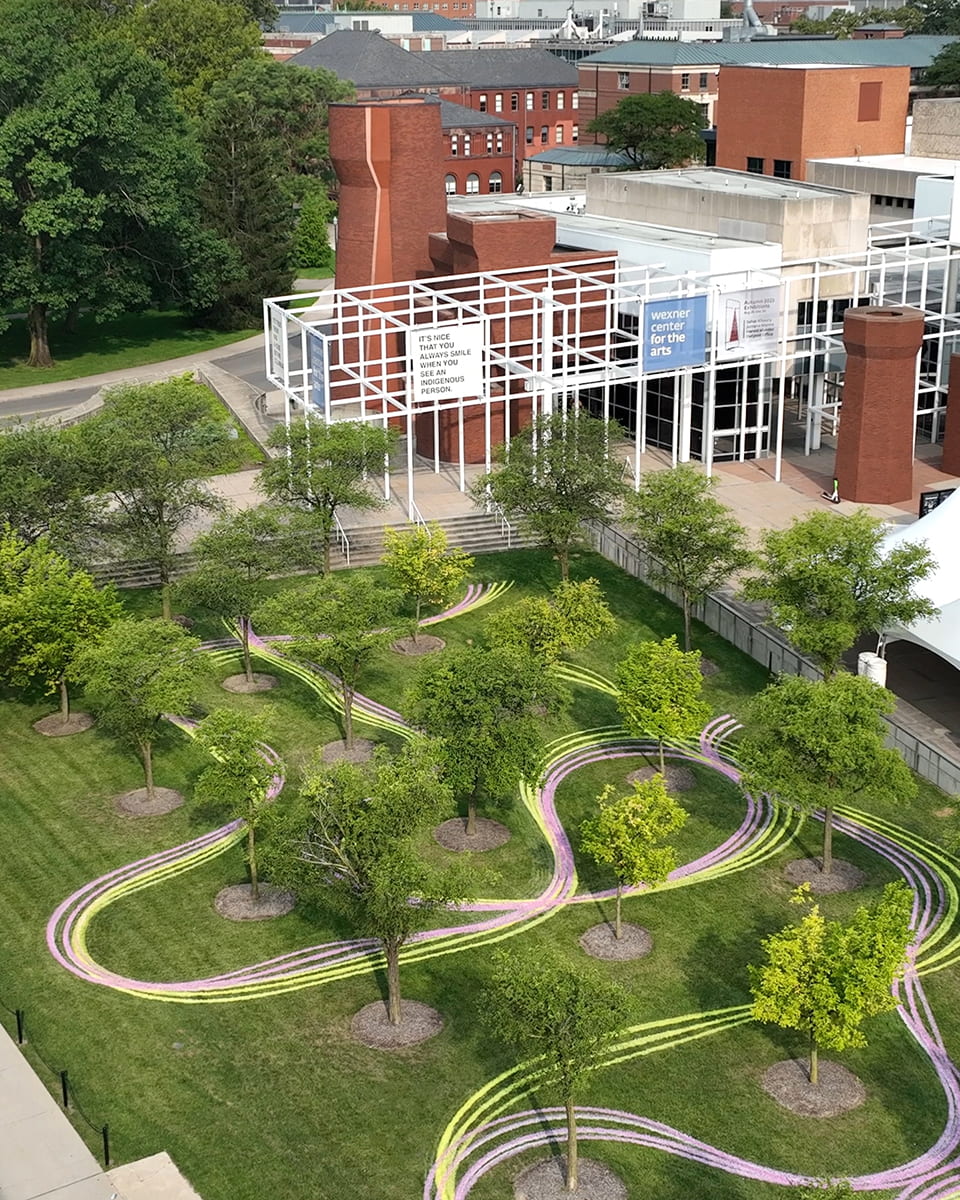
Through its temporary projects, Outpost Office hopes to emphasize the timelessness of the combination between art and architecture, and hopes to bring appreciation of the intersection to the public. Credit: Erik Herrmann
Architecture may elicit thoughts of towering skyscrapers and monuments meant to stand tall for decades.
For one local duo, though, architecture means much more: it is fields of colorful designs, dreams of impermanent creations and abstract art.
Outpost Office, a design practice founded by Knowlton School of Architecture professors Ashley Bigham and Erik Herrmann, uses a GPS-guided robot to execute large-scale art installations. Since its 2013 launch, Outpost Office has aimed to challenge the typical “permanence” quality of architecture by infusing the practice with experimental artistic techniques.
“What’s exciting about the work we’re doing is that we’re at the intersection of art and technology,” Herrmann said. “We want to encourage those overlaps.”
The robot — dubbed “Squirtle” due to its turtle-like appearance — comes from the Denmark-based company Turf Tank, where the robots are often designed to paint boundary lines on sports fields.
Wanting to stray away from soccer pitches and football fields, Herrmann and Bigham discovered what other functions the robots could serve.
“Most of our research is expanding the repertoire of what [the robot] can do,” Herrmann said. “That’s sure been an exciting process.”
Though the duo’s work does include some typical architectural projects like pavilions and housing proposals, Herrmann said a large portion of what Outpost Office does can be found on Ohio State’s campus — often right under students’ feet.

The Outpost Office’s “Drawing Fields No. 7,” which was located outside the Wexner Center for the Arts in August 2023. Credit: Erik Herrmann
Outpost Office conceptualizes and completes two kinds of paint-based installations, which Herrmann said include “hard” installations primarily applied to asphalt and “soft” installations, usually carried out on grass surfaces.
One of the pair’s more recent projects, titled “Drawing Fields No. 7,” was painted onto the Wexner Center for the Arts’ lawn in August 2023.
With help from Squirtle, Bigham said the art piece featured bright green and purple lines weaving through the center’s adjacent trees.
“Though a lot of these projects are very large, they’re also materially light,” Bigham said. “The paint we use is biodegradable and safe, so these installations don’t account for much waste when they’re finished.”
Though grass installations like “Drawing Fields No. 7” may only last a few weeks, others might last longer. That’s what makes this type of architecture so beautiful for Herrmann.
“There’s a temporal aspect to it, which makes it a little more important for when people do come to see it,” Herrmann said. “Every day it’s a little different.”
Bigham and Herrmann’s work has not only drawn the attention of those at Ohio State but around the world. In 2019, Outpost Office was named one of Architect Magazine’s “Next Progressives,” an accolade given to only five other working professionals that year.

Outpost Office uses safe, non-toxic paint to create temporary art installations. Credit: Erik Herrmann
In 2021, Bigham was selected as a Battelle Endowment for Technology and Human Affairs awardee for her robotic painting collaborations with community partners like Camp Architecture and Waterman Farms. This endowment fund supports initiatives like “public lectures, art exhibits, workshops and interactive computer projects that examine the complex relationship between science and technology and the needs and aspirations of individuals and society,” according to its website.
As of April, the design practice was also selected to exhibit at the 10th annual Concéntrico: International Festival of Architecture and Design in Logroño, Spain.
As for what the future holds for Herrmann, Bigham and Outpost Office itself, Bigham said the sky’s the limit. Ultimately, the main motive of the company’s work is making people more aware of the spaces they inhabit.
“The goal here is really to engage with the public,” Bigham said. “What we really care about is how architecture connects to people.”
More about Outpost Office and its work can be found on its Instagram page or website.
![Ohio Gov. Mike DeWine signed Senate Bill 1 — a higher education overhaul bill — into law Friday. [Ohio Gov. Mike DeWine speaks at the State of the State address in Columbus. Credit: Joshua Gunter via TNS]](https://www.thelantern.com/files/2025/03/20250204-AMX-US-NEWS-DEWINE-BUDGET-INCREASES-TAXES-FOR-1-PLD-384x253.jpg)

